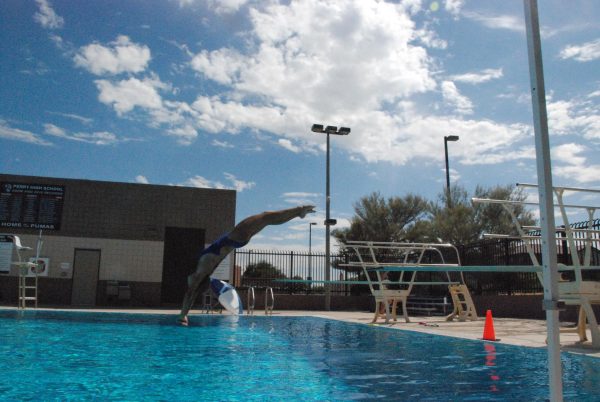School zones provide minimal protection for students
During elementary school, walking, biking, or scootering was a common way for students to get to school that was located within their neighborhood. Small neighborhood roads combined with mass amounts of children, cars, and buses meant that more protection was needed for young children.
This led to school zones. Established in 1950, this state law provided a uniform speed limit of 15 mph in school crossings near elementary and middle schools. The speed limit within any school zone, even on major roads, is 35 mph. This includes already crowded roads such as Gilbert Rd and Queen Creek Rd.
In high school, where a majority of students either drive themselves, ride the bus, or get a ride from their parents, the 35 mph speed limit is useless. The crowded roads lead to teenagers trying to speed away from school as fast as possible, swerving dangerously around cautious parents and buses full of children, some reaching speeds up to 60 mph.
There is no need for school zones near high schools now that transportation is nearly all by vehicle, and slowing down everyone for a very brief section of the road just causes trouble.
Currently, the school zone 35 mph speed limit is active Monday through Friday, from 7 am-4 pm. During the times when more than 3,000 students are traveling on the same 3 major roads to get to school, a slower speed limit makes sense, as it allows for safer turning off of the road and into the parking lot. But after school is in session, only 25 minutes after the zone begins, the traffic flow goes back to normal, and commuters are left with a pointless 35 mph speed limit.
Similarly with after school, when students are leaving, the slower speed limit allows for more ease with turning out of crowded parking lots and onto even more crowded streets. But again, only 15 minutes after school gets out at 2:14, the parking lots are barren, and traffic is back to normal, and yet the school zone remains active for another hour and a half.
Changing the school zone hours to directly target key arrival and departure times would help to increase the flow of traffic and limit the number of tickets given for speeding through the school zone. Especially with these fines beginning at $223, and reaching all the way up to $388, commuters are in danger of receiving a nice payment if they are not careful when passing through school zones.
Currently, the extended hours of 35 mph school zones only cause delays for commuters and provide little protection for those very few students who walk to and from school. Limiting the times that the zones are active would increase traffic flow, and limit the amount of unnecessary slow driving.

Lauren Ludwig is a senior and is excited for her second year of newspaper. Her beat this year is the English Department, which she is excited to write...







